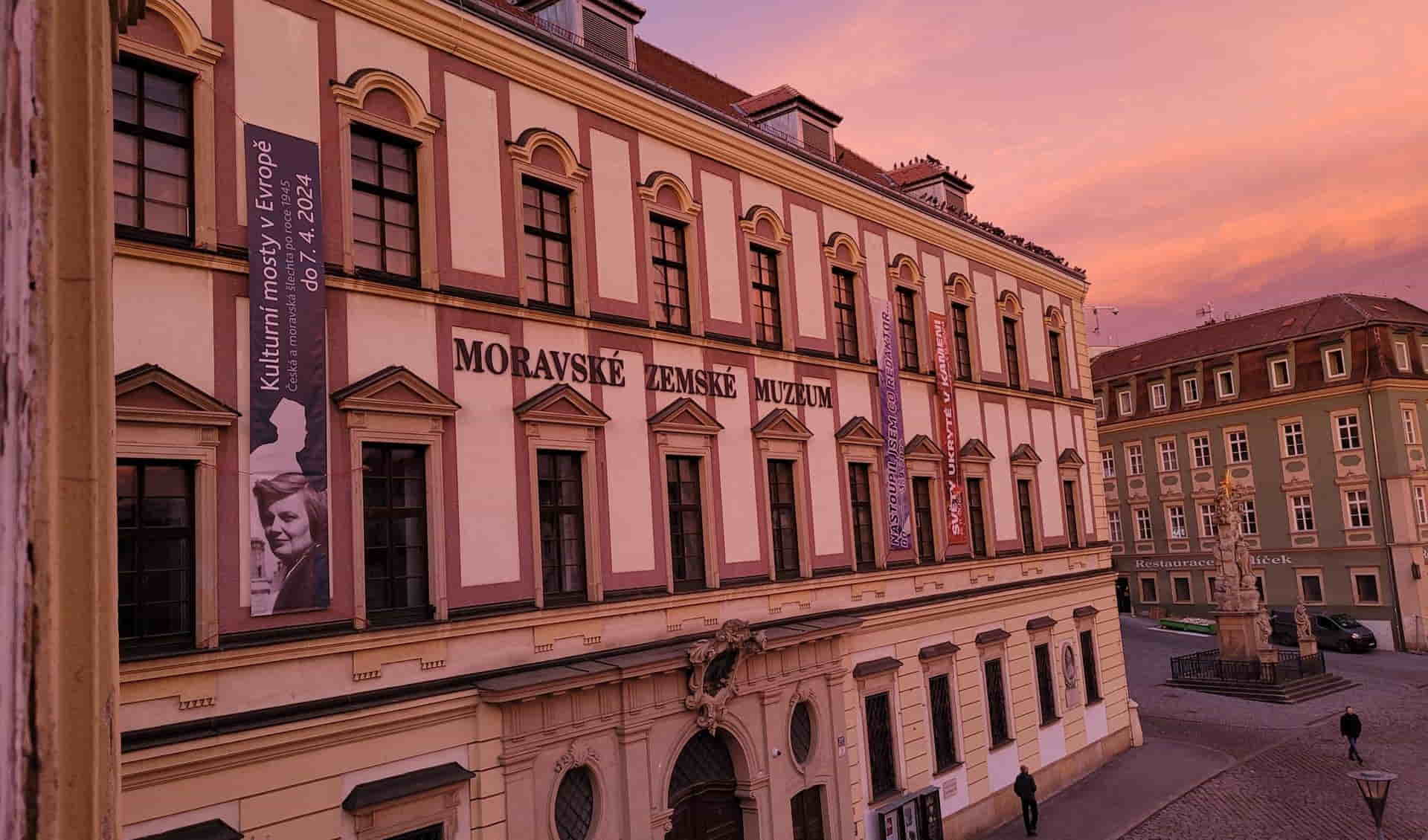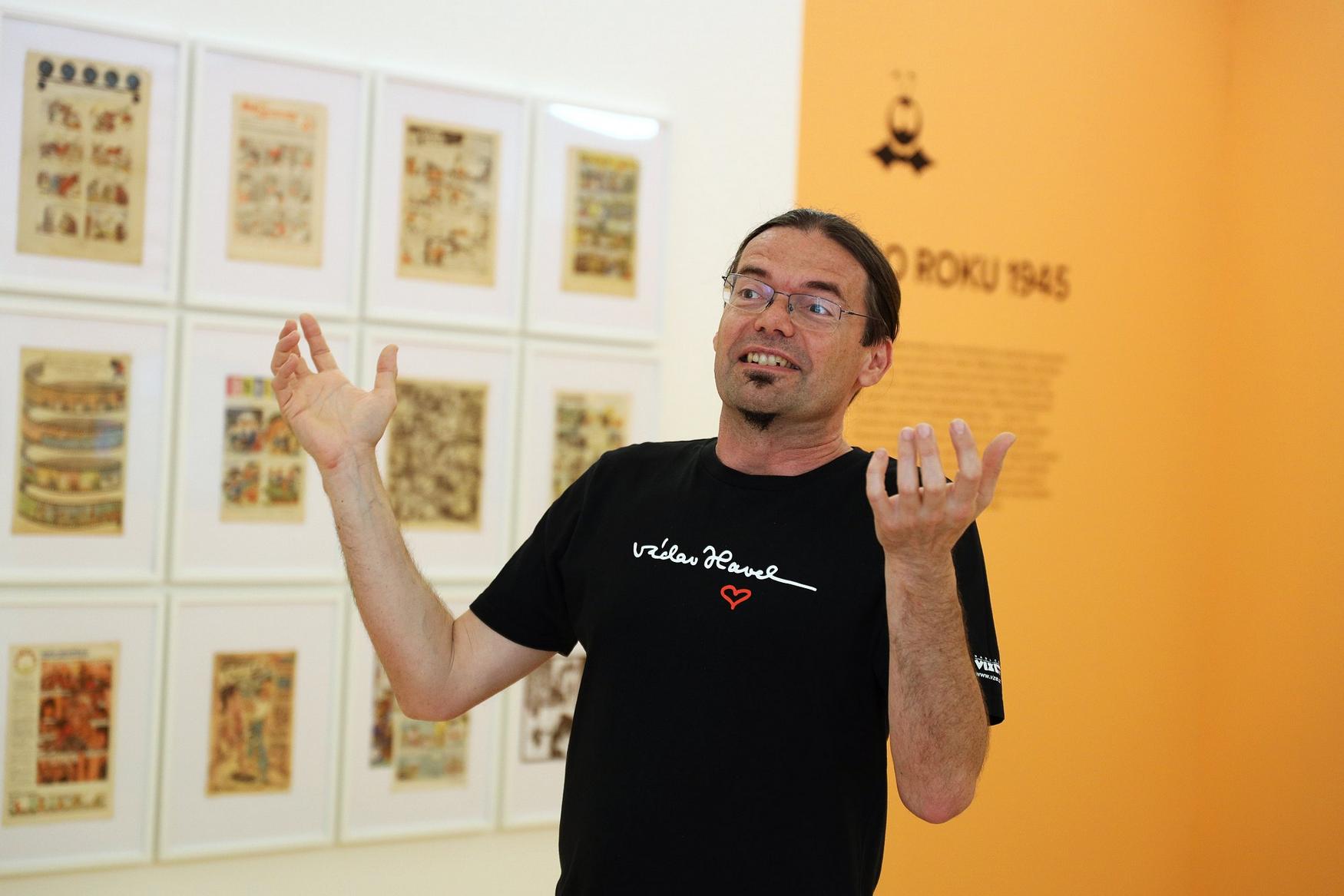Stepping through the historic city of Brno in the Czech Republic, family adventurers will find themselves enchanted by the grandeur of Dietrichstein Palace. This architectural jewel, one of the most significant Baroque buildings in the region, stands as a testament to the aristocratic elegance of Moravia's past. Established as the residence of Cardinal František Dietrichstein in the early 17th century, the palace has since been woven into the cultural tapestry of Brno, encapsulating stories that span across generations.
Today, after an extensive renovation in the 1980s, Dietrichstein Palace opens its doors to the public, enveloping visitors within its opulent walls that now house the rich collections of the Moravian Museum. As the second oldest museum in the country, it serves as a treasure trove of over six million artifacts, ranging from natural history to fine arts. Families journeying through its galleries can engage with educational and fascinating exhibits, offering a unique glimpse into Moravian culture and history.
Contents
 Photo: facebook.com/MZM1817
Photo: facebook.com/MZM1817
A visit to Dietrichstein Palace is not just a walk through a noble estate but a journey of discovery through the annals of time. Whether marveling at the Baroque architecture or uncovering tales of the Austro-Hungarian Empire, there is something to pique the curiosity of every family member. The palace's prime location at the foot of the stunning St. Peter and Paul Cathedral further adds to its allure, promising an immersion in the region's heritage that will leave a lasting impression on young minds.
Explore the history of Brno through the enchanting corridors of Dietrichstein Palace and create family memories set against the backdrop of Moravia's noble past.
What is Dietrichstein Palace Known for?
Dietrichstein Palace in Brno is renowned for being one of the most significant Baroque buildings in the city, erected between 1613-1616 as the governor residence of Cardinal František Dietrichstein. This architectural gem received its distinctive Baroque shape at the turn of the 17th and 18th centuries and has been utilized for exhibition since 1911. Today, Dietrichstein Palace stands as a cultural landmark, housing the Moravian Museum and serving as a testament to Brno's rich history and architectural heritage
Here is Why Your Kids Will Find it Interesting
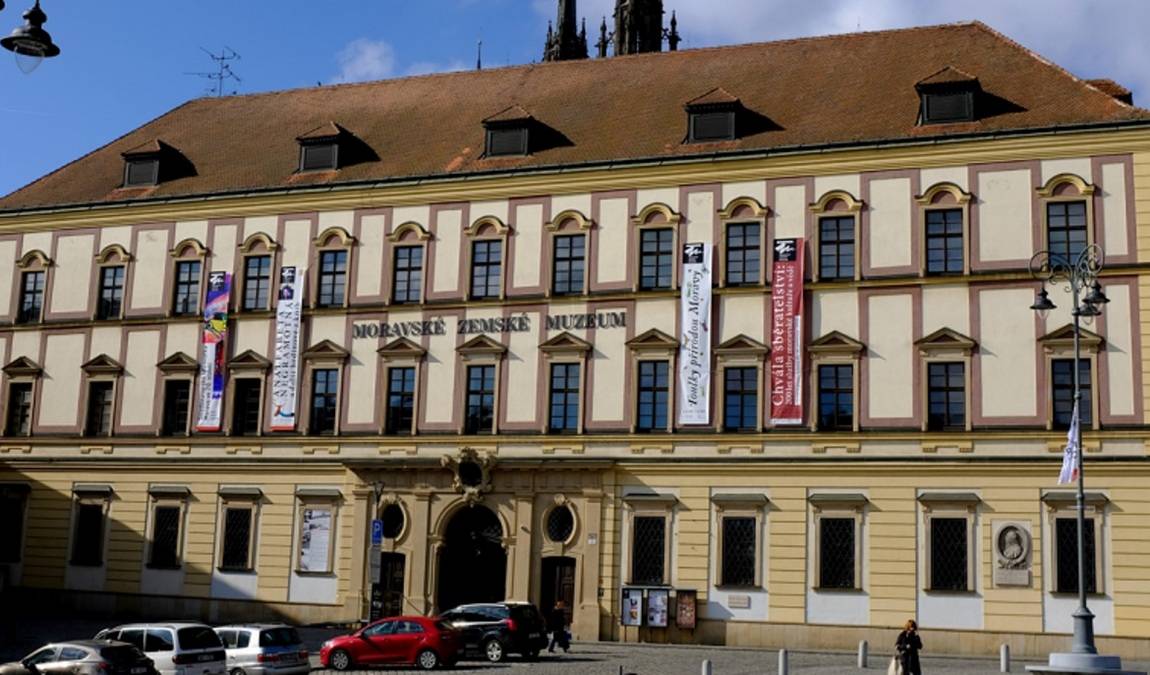 Photo: mzm.cz
Photo: mzm.cz
The Palace is a gem in the heart of Brno that gives an educational experience perfect for children. This historical structure provides a unique opportunity for families to immerse in the rich tales of the past within a setting that children find intriguing and inspiring.
- Exploratory Walks: The palace is at the foot of the majestic St. Peter and Paul Cathedral, inviting families to stroll through history. Children often have boundless energy; here, they can channel it into an exploratory walk around the palace's surroundings, making an adventure out of learning.
- Family-Friendly Exhibits: The exhibitions within the building are educational treasures for young, curious minds with a thirst for knowledge. Showcasing subjects like paleontology and mineralogy, the displays are a gateway for children to the natural world. Interactive exhibits bring history to life, particularly for those in the early school years, say, between the ages of 6 and 12.
Dietrichstein Palace is worth visiting with kids because it marries education with fun. It offers a family-friendly dive into European history that is age-appropriate and genuinely fascinating. Children often leave with stories to tell, charting their little exploration through one of Moravia's most storied buildings.
History of Dietrichstein Palace
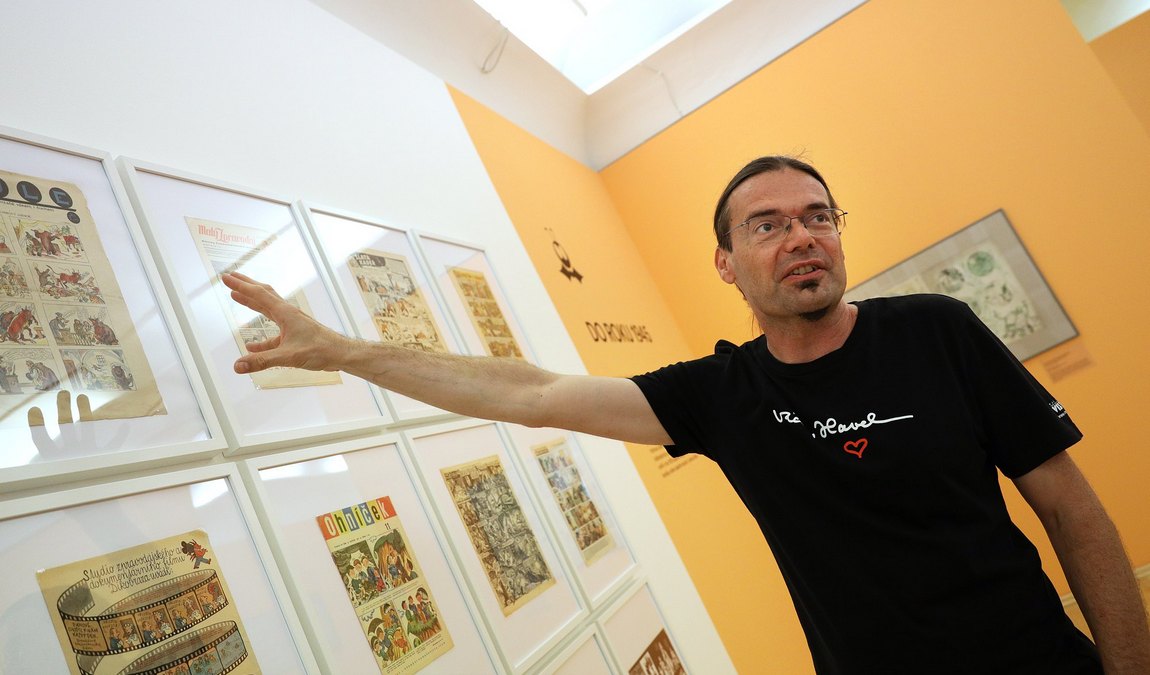 Photo: facebook.com/MZM1817
Photo: facebook.com/MZM1817
Dietrichstein Palace, a gem of the Baroque era, holds centuries of history within its walls. The palace was initially built to serve as the residence for Cardinal František Dietrichstein, who played a substantial role as the bishop of Olomouc.
- Construction: The elegant structure was erected between 1613 and 1616, with its architectural brilliance courtesy of the Italian architect Giovanni Giacomo Tencallo.
- Baroque Influence: During the Baroque period, particularly at the turn of the 17th and 18th centuries, the palace was given its distinctive high Baroque shape.
- Renovations: In its history, the palace underwent significant renovations, most notably under the auspices of Domenico Martinelli, another revered Italian architect, around 1700.
The House of Dietrichstein, one of Austria's oldest noble families, has profoundly impacted the region. With its lineage tracing back to Carinthia, the family was a part of the high nobility in the Holy Roman Empire. In 1624, the branch of the Nikolsburg family, now Mikulov, was elevated to the rank of Prince of Dietrichstein.
Franz Seraph von Dietrichstein, another notable figure from the family, made the palace his residence in Brno and left his mark on the structure's history.
Today, the building is part of a complex that houses the Moravian Museum, a testament to its enduring legacy and ability to adapt to modern needs while preserving its regal past. Its grandeur is a feast for the eyes and a learning adventure for families, illuminating the lives and legacy of the Dietrichstein lineage and the Baroque period's architectural splendor. Visitors are welcomed to the Moravian Museum's official site for a deeper exploration of its historical significance.
- Just a few steps away from the museum is Brno's famous market - Zelny Trh
Prominent Residents
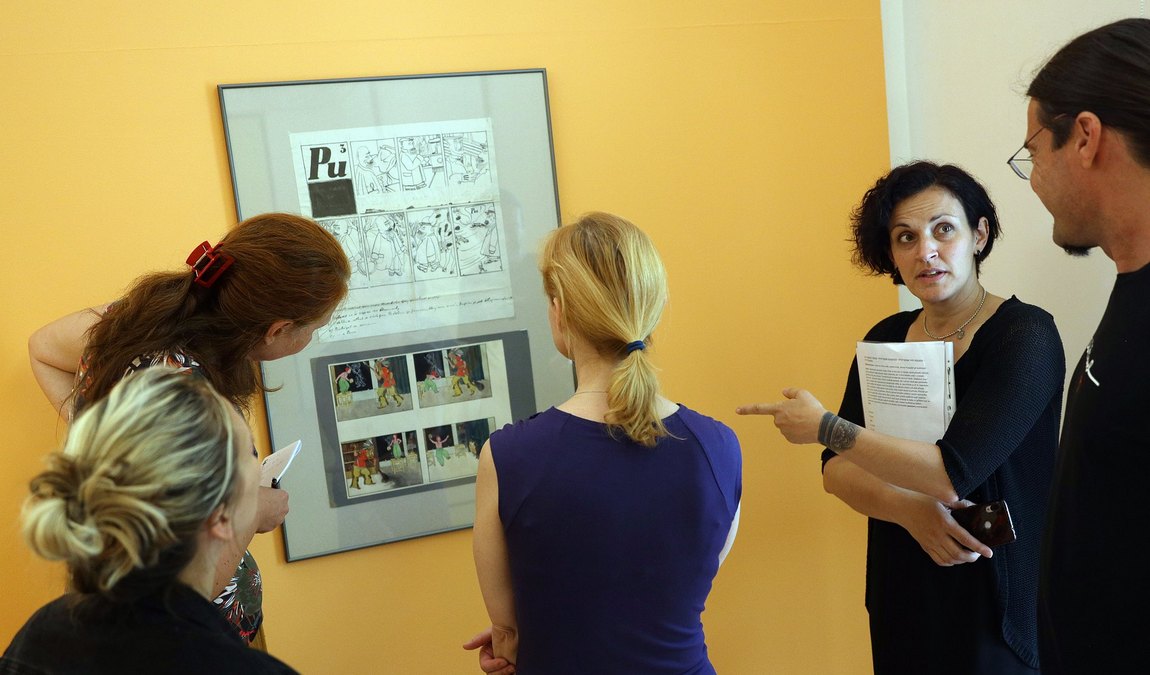 Photo: facebook.com/MZM1817
Photo: facebook.com/MZM1817
Dietrichstein Palace has been graced by notable historical figures, each leaving a unique imprint on its cultural and architectural legacy.
A man of stature and influence, Cardinal František Dietrichstein, the Bishop of Olomouc, commissioned the construction of the Dietrichstein Palace. Serving as his residence, the palace symbolized his status within the Church and the Moravian region. Under his patronage, from 1613 to 1636, the palace served as a gubernatorial home and a cultural hub in Brno.
Later, the palace became the official residence of Prince Maximilian von Dietrichstein, a member of the high-ranking Austrian nobility. Born as Franz Seraph von Dietrichstein, Prince Maximilian was an integral member of the Austrian court. He was married to Margarita Folch de Cardona, and their life in the Dietrichstein Palace was marked by grandeur and influence, as was typical for the Hochadel. The family later became associated with Nikolsburg, now Mikulov, transforming the locality into a focal point of their noble lineage.
Visitors to Brno can revel in the architectural splendor and imagine the historical events that unfolded within the walls of this grand edifice.
Architectural Features
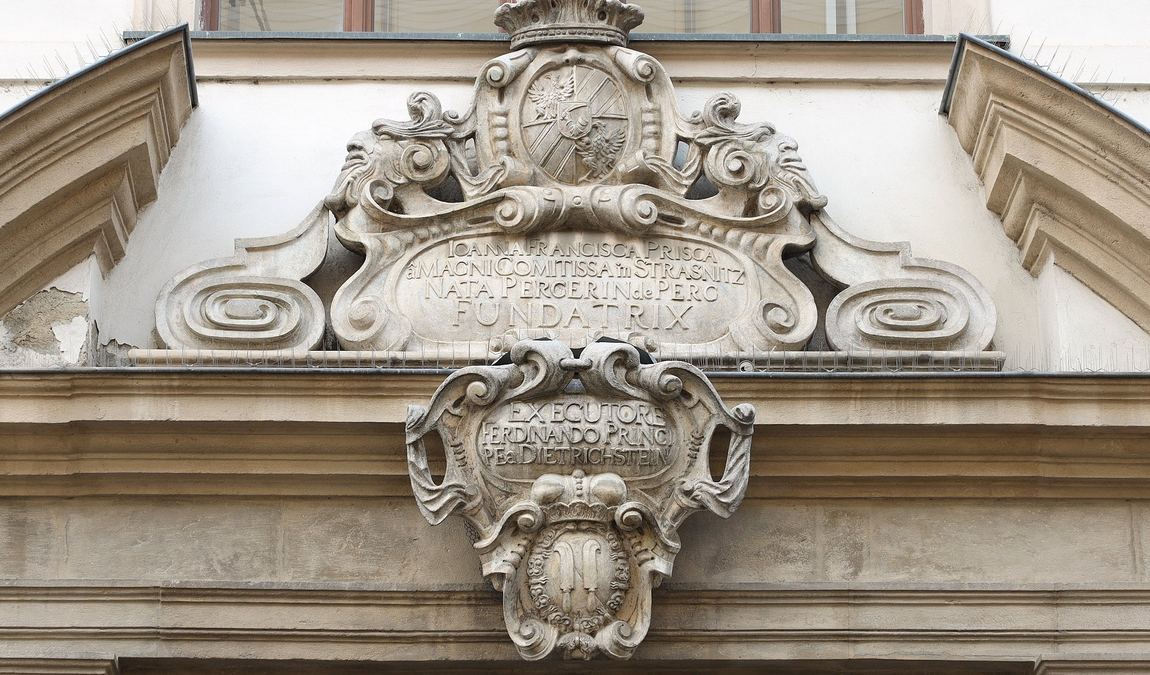 Photo: facebook.com/MZM1817
Photo: facebook.com/MZM1817
This palace captures the essence of Baroque magnificence combined with thoughtful interior design that has evolved over the centuries. Decades of renovations have only highlighted its stunning architecture, making it as much a home for art as it was a residence for royalty.
The Baroque influence is at the heart of the Palace's grandeur, evident in its majestic façade and elaborate decorations. This style, originating in Rome, traveled across Europe to leave its indelible mark in cities like Vienna and, subsequently, Brno. Notable for its complex structures, rich ornamentation, and dynamic surfaces, the palace's Baroque features embody 17th-century design aesthetics.
The interior of the palace is a journey through history and art. Each room is a canvas displaying the finest works from a bygone era with intricate frescoes and stucco work that beckon visitors into a world of opulent luxury. The thoughtful interior renovations throughout the 1980s have made these spaces more splendid and more accessible and enjoyable for families exploring the rich cultural tapestry within the walls of this historic edifice.
Use as Moravian Museum
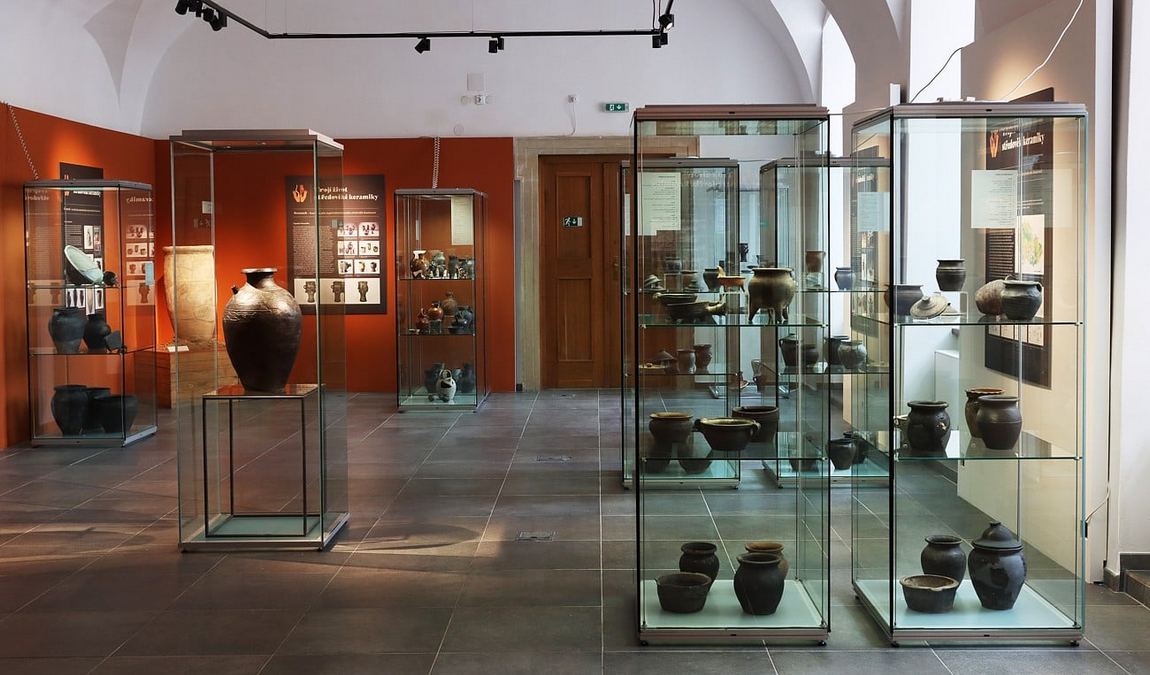 Photo: facebook.com/MZM1817
Photo: facebook.com/MZM1817
It is now a beloved centerpiece for the Moravské Zemské Muzeum. Once a governor's residence, this majestic structure has, since 1911, been a treasure trove for families passionate about exploring the relics of history, culture, and science.
The museum's vast collection spans several million artifacts, making it the second-largest repository in the Czech Republic. Enthralling exhibitions come to life within the palace's historic walls, where children and adults can journey through the multifaceted narrative of Moravia's past and present.
Historical Highlights
| Baroque Architecture |
|---|
| 1817 Museum Foundation |
| Governor Residence Conversion |
| Millions of Cultural Artefacts |
| Family-friendly Exhibits |
Families who wander through the museum's exhibits can unearth everything from geological to zoological wonders. It's more than just a gallery; it's an interactive experience that catapults visitors back in time. The palace, having undergone extensive renovation in the 1980s, not only preserves the past but also showcases it in a manner that's engaging for kids and informative for adults.
Major exhibitions:
Extinct life in Moravia
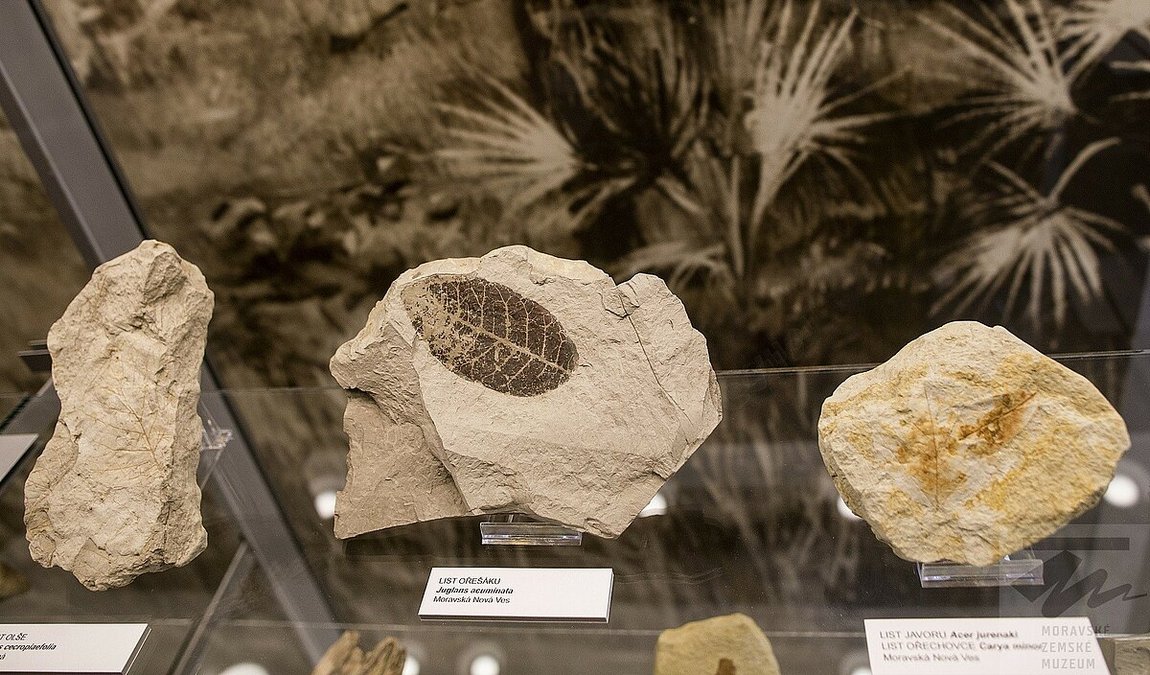 Photo: mzm.cz
Photo: mzm.cz
Explore the Lost World of Moravia! Step into the captivating tale of ancient Moravia, where curious creatures roamed amidst lush flora, creating a unique ecosystem that defined this land. Let your imagination soar as you marvel at the diverse life forms showcased through fossils, lifelike models, intricate reconstructions, and immersive dioramas. Our experts are eager to guide you through this extraordinary journey, offering insights and information to enhance your experience. Join us and uncover the rich tapestry of life that once thrived in Moravia's past.
Great Moravia
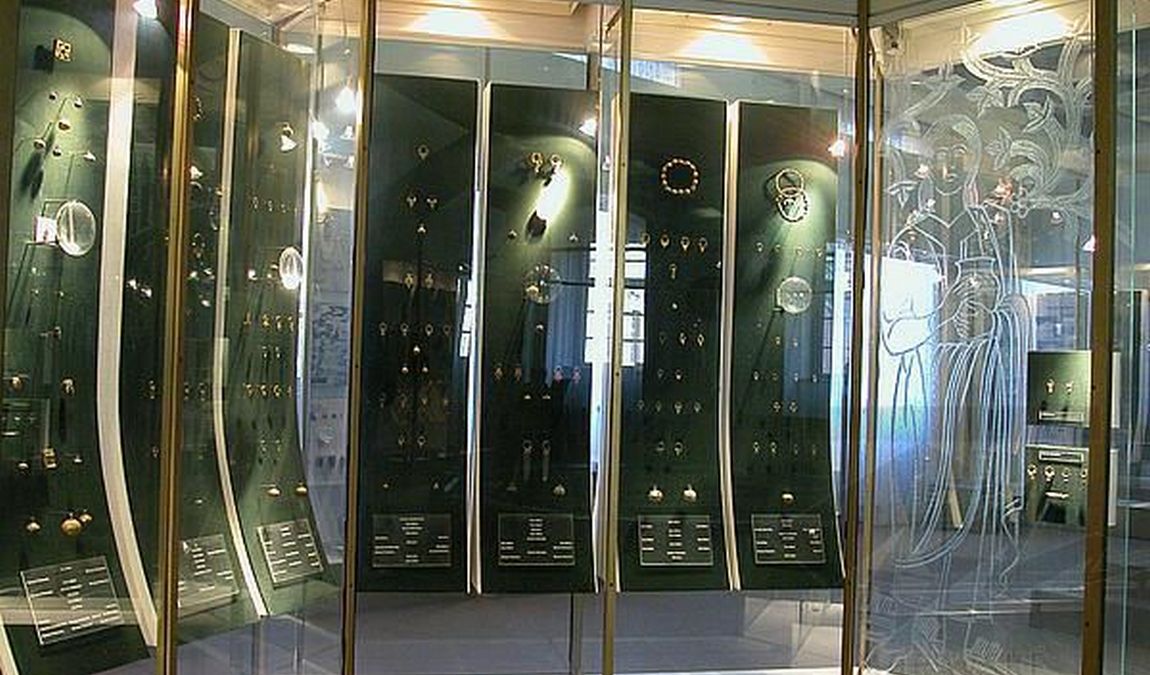 Photo: mzm.cz
Photo: mzm.cz
Immerse yourself in an exhibition that unveils the abundant treasures chronicling the extraordinary phenomenon of Great Moravia, the very first Slavonic state. Prepare to be captivated by the exquisite beauty of Moravian jewelry, pottery, technological prowess, and the skilled craftsmanship of Moravian artisans. At the heart of the exhibition lies a treasure trove showcasing the renowned and most splendid jewels from Staré Město near Uherské Hradiště, Mikulčice, and Břeclav - Pohansko.
Be drawn in by detailed models of fortified settlements (castles) near Mikulčice, a reconstruction of a jewelry workshop from Staré Město, and original wooden well boarding from the exact location. Embark on the Great Moravia journey and spread the word to all you encounter - It’s an experience not to be missed!
Prehistory of Moravia
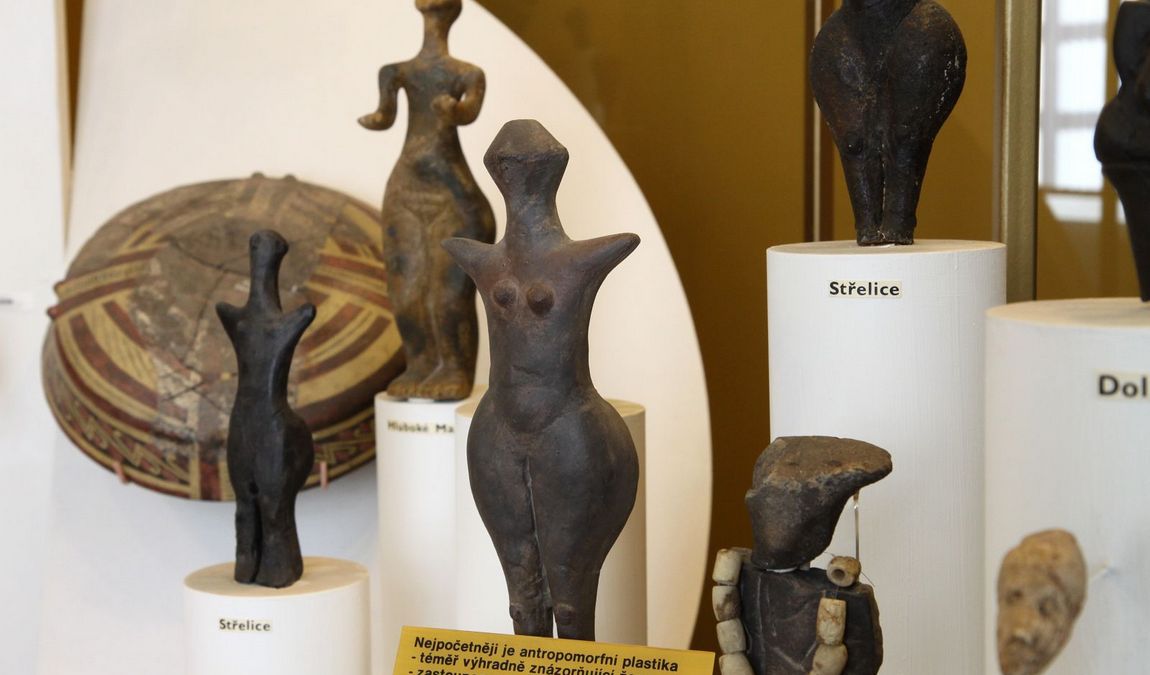 Photo: mzm.cz
Photo: mzm.cz
Can you fathom that the first human footprints on Moravian soil date back 800,000 years? What were their lives like? How did they survive? What did they wear? Delve into their daily existence, their beliefs, and their gods. Are you intrigued? Do you long to uncover their story? This exhibition promises to unravel the mysteries, addressing questions of identity and origins. Follow a chronological journey through artifacts illuminating different periods and evolution cultures. Marvel at unique discoveries on display - from copper artifacts in Blučina to golden treasures from various sites and bronze pot mountings from Brno-Maloměřice.
Central European Crossroad: Moravia in the 20th century
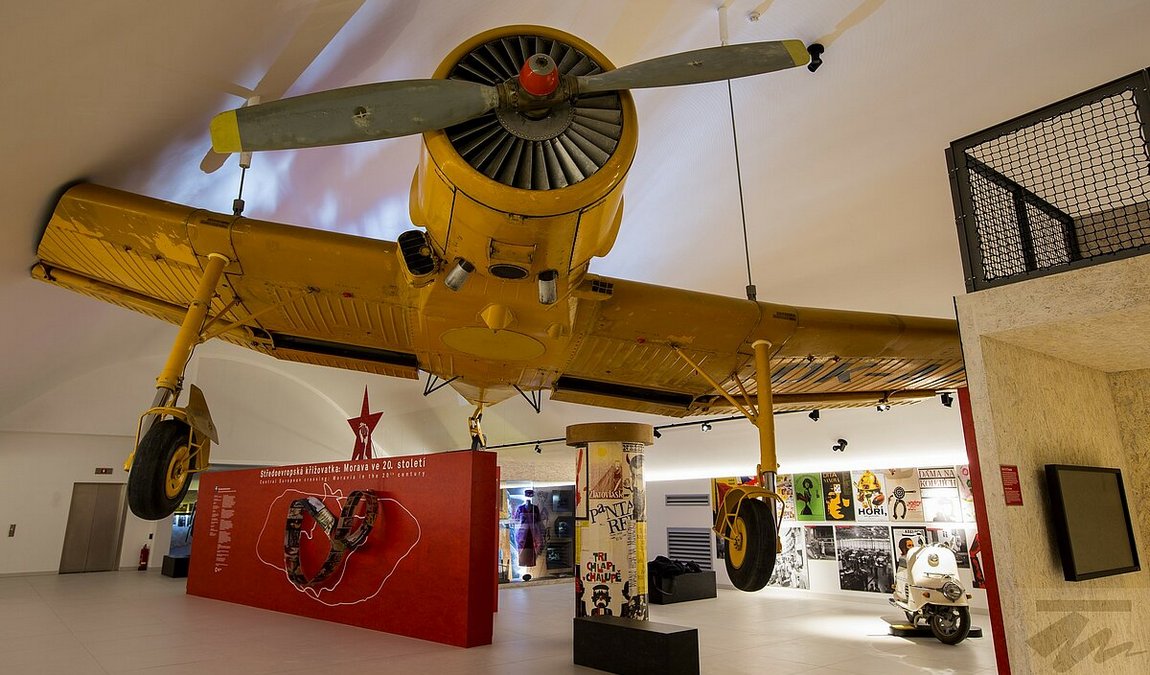 Photo: mzm.cz
Photo: mzm.cz
Experience the new permanent exhibition that delves into the pivotal historical events of the 20th century within the context of the north Danubian region's history, focusing on the historical boundaries of the present-day Czech Republic and highlighting the legacy of the Moravian Margraviate. It will comprehensively map political, cultural, and social history, following a chronological-thematic approach.
Additionally, it will include cultural and scientific insights, featuring significant institutions and personalities alongside depictions of everyday life. The exhibition aims to showcase the evolution of the country, its institutions, cultural phenomena, and influential figures that shaped its identity and role within the history of the Czech Lands, the broader Central European region, and beyond.
Best Time to Visit
When planning a family outing to Dietrichsteinský palác, timing can enhance the experience significantly. The ideal time to visit with children is during spring and early autumn, as the weather is generally mild, allowing families to comfortably explore both the indoor exhibits and the surrounding areas of Brno.
Weekdays are usually less crowded, making navigating through the exhibits with kids in tow easier. Aim for a morning visit between 10:00 AM and 12:00 PM, when the palace is less likely crowded, and the children are most alert and curious. Moreover, weekdays often provide a tranquil atmosphere for children to engage with the interactive displays and for parents to appreciate the art without the hustle and bustle of weekend foot traffic.
School Holidays: During these periods, always check for special family-friendly programs or workshops that may be running, which are both educational and entertaining for children.
Admission Fee: Children and families can benefit from reduced rates or family tickets, so be sure to inquire about these options at the time of your visit.
To stay updated on any changes to opening times or special events that might pique the interest of younger visitors, visit the official Moravian Museum website. With these tips in mind, visiting Dietrichsteinský palác can be a delightful and enlightening experience for the whole family.
How Long Does It Take to Attend?
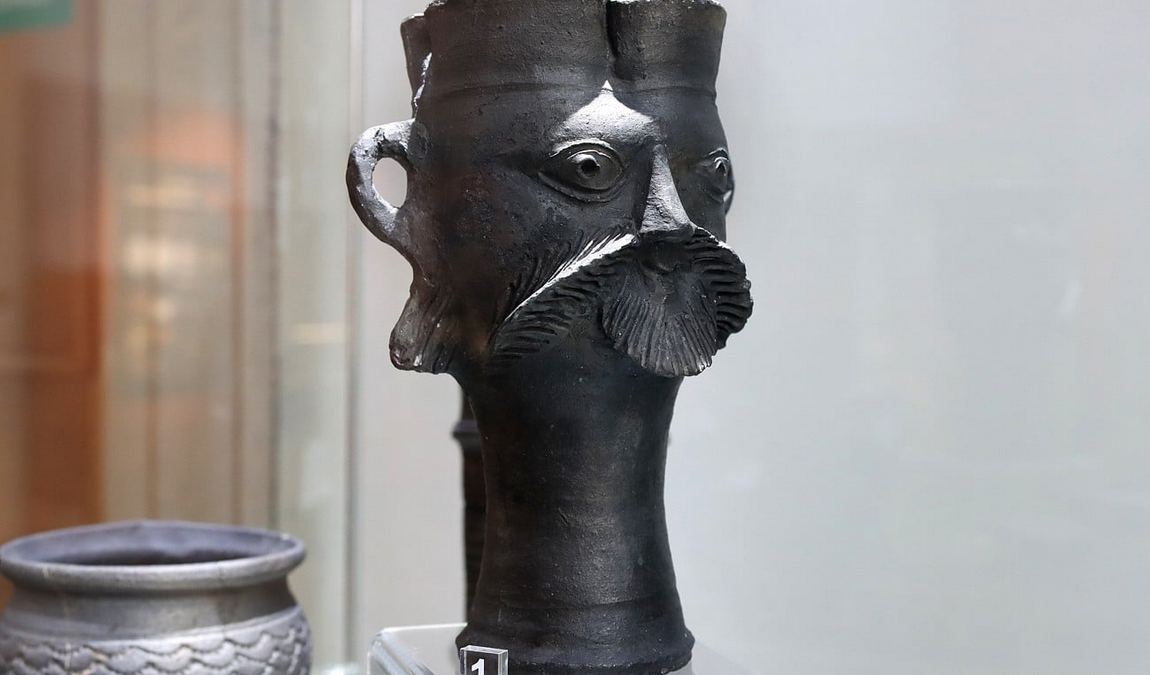 Photo: mzm.cz
Photo: mzm.cz
Visitors planning a trip to this spot often wonder about the time investment required to ensure a thorough and enjoyable experience.
For Families and Children:
- A Guided Tour: They can expect to spend approximately 1 hour on a guided excursion through the palace's rooms, soaking in the rich history.
- Exploration Time: Afterwards, an additional hour is suggested for families to peruse at their own pace, allowing the little ones to gaze at the extensive exhibits with childlike wonder.
For Focused Visits:
- Exhibit-Specific Visits: If they are interested in paleontology, mineralogy, or history, a focused visit to these exhibits may take 1 to 1.5 hours.
Outdoor Enthusiasts:
- Gardens and Grounds: For those who relish nature, a stroll in the beautifully landscaped gardens can add another 30 minutes to their itinerary. It's a picturesque opportunity to stretch your little legs and let your imaginations run wild amongst the greenery.
In summary, a visit to Dietrichstein Palace is comfortably experienced in about 2 to 3 hours. It ensures families fully appreciate the palace's historical beauty without rushing, making memories to last a lifetime.
Is Dietrichstein Palace Worth Visiting?
 Photo: mzm.cz
Photo: mzm.cz
For families seeking a blend of cultural immersion and historical exploration, Dietrichstein Palace emerges as a top contender for a must-visit destination in Brno. This baroque palace is more than an architectural marvel; it is a repository of Moravian history, as it houses the main exhibitions of the Moravian Museum. Here, children's imaginations can roam free through exhibitions of paleontology, mineralogy, and early medieval artifacts.
Attractions for Kids:
- Educational Exhibits: Compelling for young minds eager to learn.
- Interactive Displays: Some areas are designed for hands-on learning.
The palace's longstanding presence at the city's heart reveals much about the region's past. Its foundations tied closely with the story of the Bishop of Olomouc, Franz von Dietrichstein, remembered by history as the "Moravian King." This connection gives visitors an authentic glimpse into the authority and power within Moravia during the early 17th century.
Reasons to visit Dietrichstein Palace include:
- A thorough understanding of local history.
- An essential background of the Austro-Hungarian Empire's influence in Moravia.
- A captivating peek into past governance and cultural practices, specifically from the era that stretched until 1918.
Dietrichstein Palace is worth visiting for families because of its educational relevance, accessibility, and unique positioning in Brno's historical narrative. It sits at the foot of the majestic St. Peter and Paul Cathedral, offering a day trip filled with learning and unforgettable moments.
Families prepared for an enriching escapade will find Dietrichstein Palace to be a gem worth the trip, connecting both young and old with Europe's grand heritage in a profound manner. It represents more than just a historic site; it connects the bygone eras to the modern-day quest for knowledge and adventure.


